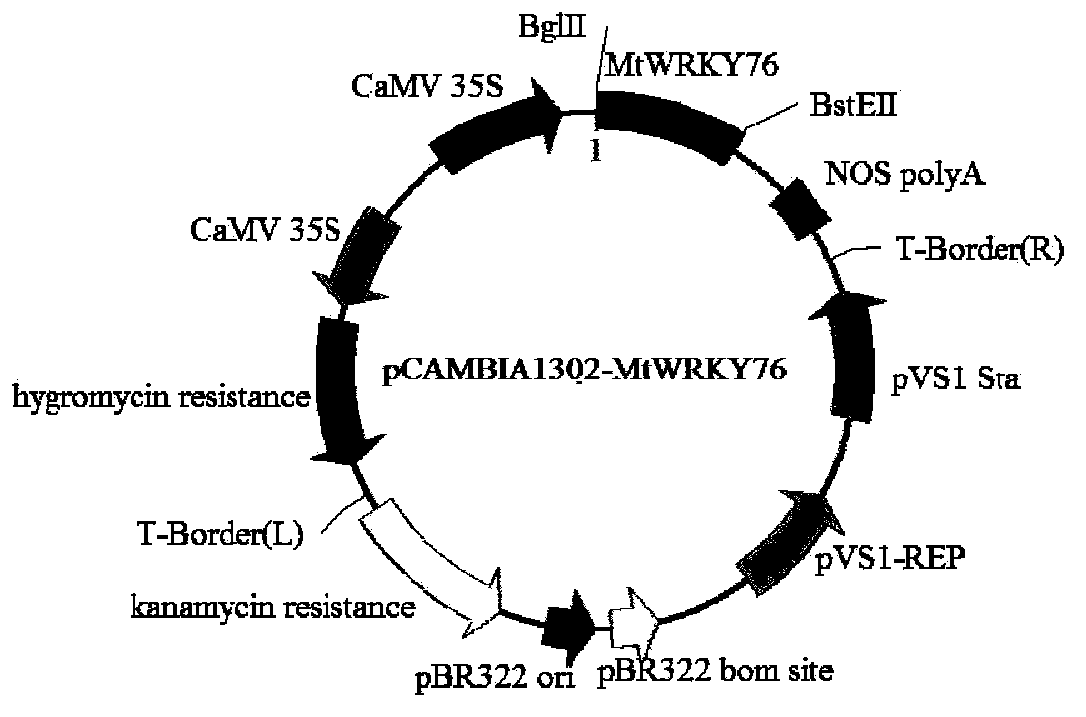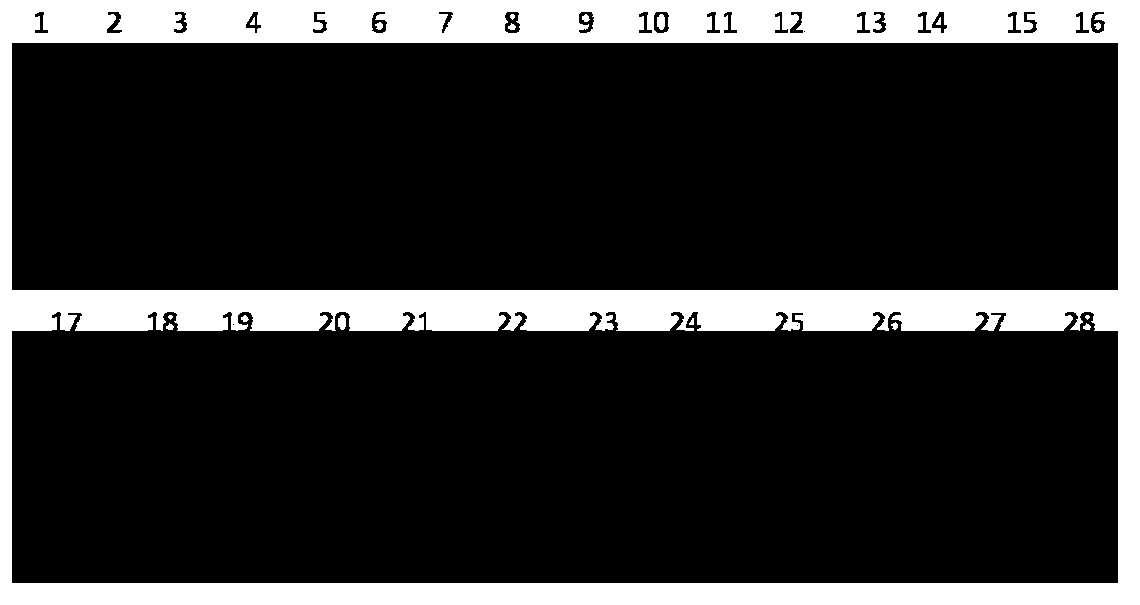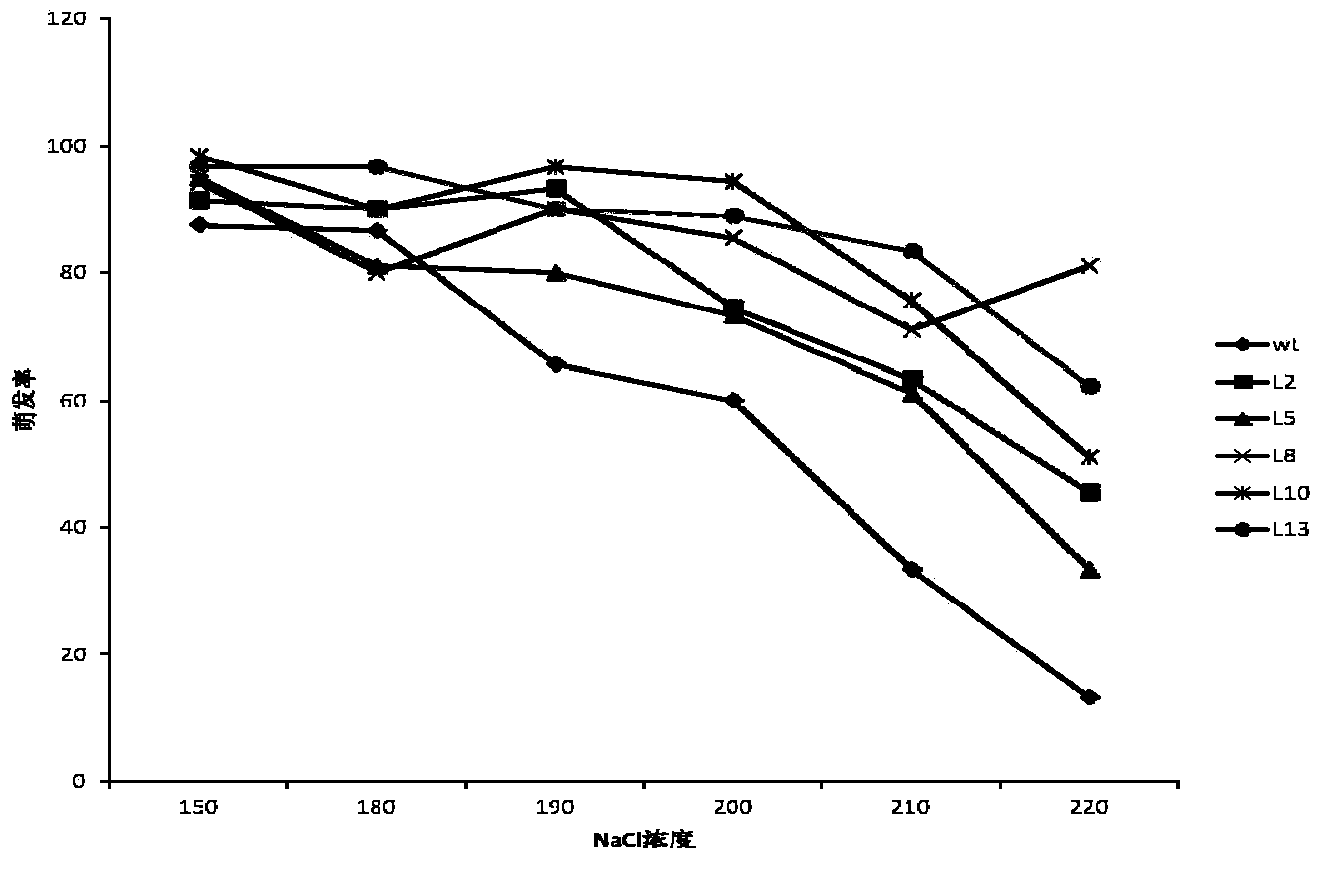New application of protein derived from clover and its coding genes
A protein and gene technology, applied in genetic engineering, plant genetic improvement, using vectors to introduce foreign genetic material, etc., can solve problems affecting plants
- Summary
- Abstract
- Description
- Claims
- Application Information
AI Technical Summary
Problems solved by technology
Method used
Image
Examples
Embodiment 1
[0079] Embodiment 1, the cloning of MtWRKY76 gene
[0080] 1. Design specific primer pairs (MtWRKY76_5' and MtWRKY76_3'), synthesized by Invitrogen.
[0081] P1F: 5'-
[0082] AGATCTAGATTACAAAGATCATGATGGTGACTATAAGGACCACGACATCGATTACAAAGATGATGATGATAAAATGGAATCAACATGCGTGGAT-3';
[0083] P1R: 5'-GGTGACCTCACCATTTGTCCTTATTAG-3'.
[0084] 2. Extract the RNA from the whole plant of Medicago truncatula (Medicago truncatula) and reverse transcribe it into cDNA;
[0085] 3. Using the cDNA in step 2 as a template, perform PCR amplification on P1F and P1R with the specific primers in step 1, and recover the PCR amplification product.
[0086] 4. Sequencing the PCR amplification product in step 3.
[0087] The sequencing result shows that the gene sequence of the PCR product is sequence 1 in the sequence table, sequence 1 is composed of 938 nucleotides, and the coding region is the 74th-931st nucleotides from the 5' end of sequence 1, from The 1st-7th nucleotides at the 5' end are the B...
Embodiment 2
[0089] Example 2, Obtaining and Functional Research of Transgenic Arabidopsis
[0090] 1. Obtaining transgenic Arabidopsis
[0091] 1. Construction of recombinant vector (pCAMBIA1302-MtWRKY76)
[0092] (1) Digest vector pMD18T-simple-MtWRKY76 with restriction endonucleases BglⅡ and BstEⅡ to recover small fragments.
[0093] (2) pCAMBIA1302 (purchased from the Center for the Application of Molecular Biology to International Agriculture, www.cambia.org) was double digested with restriction endonucleases BglII and BstEII, and the vector skeleton was recovered.
[0094] (3) Ligate the small fragment of step (1) with the vector backbone of step (2) to obtain the ligation product, transform the ligation product into Escherichia coli DH5α, obtain a transformant, extract the plasmid of the transformant, sequence, and sequence the result It shows that the recombinant vector obtained by inserting sequence 1 in the sequence table between the BglⅡ and BstEⅡ restriction sites of pCAMBIA1...
Embodiment 3
[0122] Example 3, Obtaining and functional research of transgenic truncated alfalfa
[0123] 1. Obtaining transgenic truncated alfalfa
[0124] (1) Transformation of truncated alfalfa by vacuum leaf disk transformation method
[0125] The recombinant Agrobacterium EHA105 / pCAMBIA1302-MtWRKY76 in Example 2 was used to infect the leaves of alfalfa R-108, and the alfalfa R-108 was transformed by the method of somatic embryo regeneration by vacuum leaf disc transformation.
[0126] ① Preparation of truncated alfalfa material
[0127] Select the truncated alfalfa R-108 with plump seeds and soak it in concentrated sulfuric acid for about 25 minutes (every 5 minutes, shake gently), until small spots appear on the surface of the seeds, wash it with a large amount of distilled water for 7 times, and ensure that the surface of the seeds is covered with a water film. Put them at 4°C for vernalization for 2 days. Put a layer of filter paper on a large petri dish, moisten it with distill...
PUM
 Login to view more
Login to view more Abstract
Description
Claims
Application Information
 Login to view more
Login to view more - R&D Engineer
- R&D Manager
- IP Professional
- Industry Leading Data Capabilities
- Powerful AI technology
- Patent DNA Extraction
Browse by: Latest US Patents, China's latest patents, Technical Efficacy Thesaurus, Application Domain, Technology Topic.
© 2024 PatSnap. All rights reserved.Legal|Privacy policy|Modern Slavery Act Transparency Statement|Sitemap



